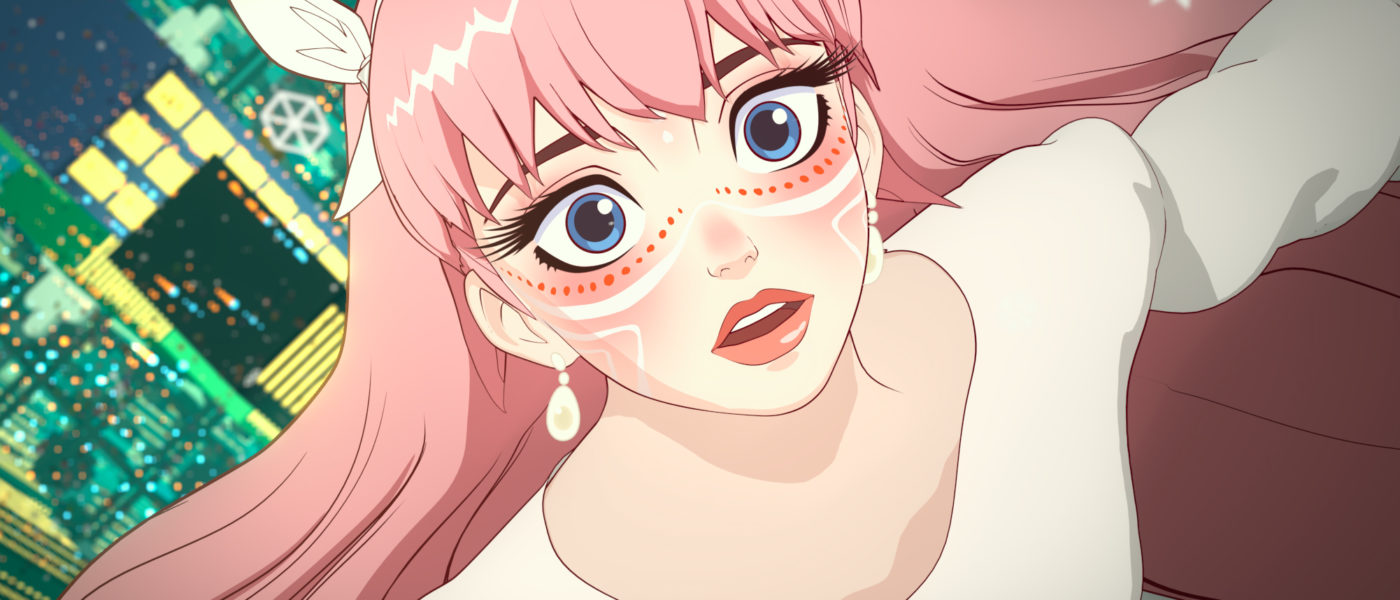Gorgeous UI, Poor Programming In Hosoda’s Latest Feature
DIRECTED BY MAMORU HOSODA/2021
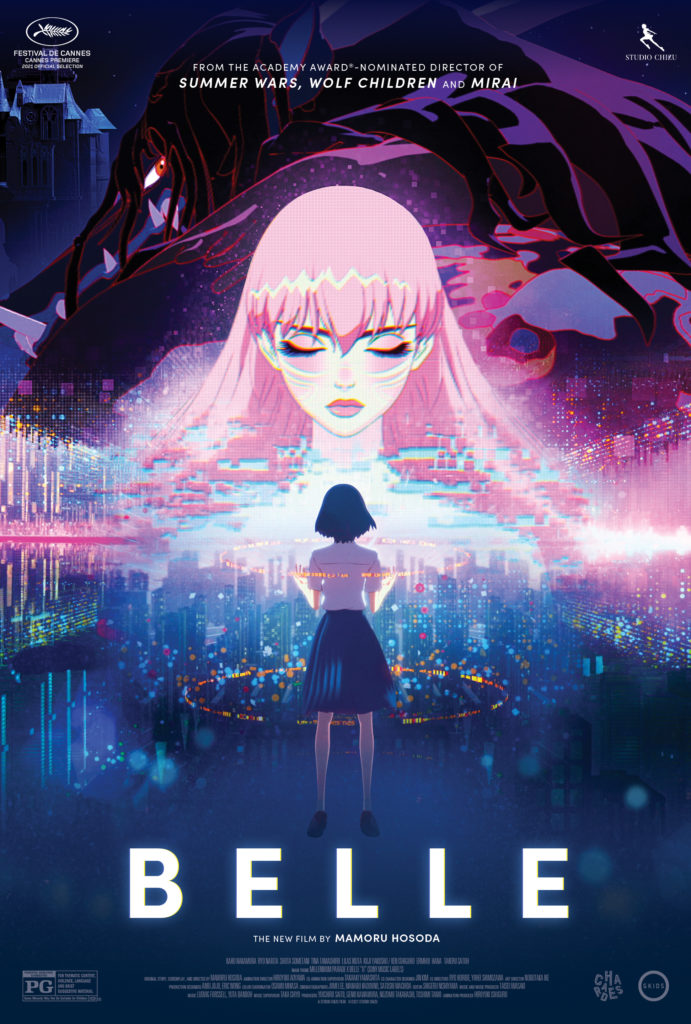
One of the best known anime directors, arguably second only to Hayao Miyazaki, Mamoru Hosoda has made a name for himself creating some of the finest, most stylish works of feature animation to come out of Japan in the past two decades. Approachable to audiences of all ages, with distinct narratives and an instantly recognizable yet highly versatile visual style, his body of work has maintained a consistent high quality.
However, even the best of directors can make missteps.
That doesn’t mean 2021’s Belle, the latest from Hosoda and animation house Studio Chizu, is a bad film, certainly. Hosoda pairs gorgeous backgrounds and lavish hand-drawn animation in the real world with inventive and gorgeously stylish CG figures in the fantastical computer world of U, the title character of Belle especially being a clear labor of love by the designers and animators that worked on her. The soundtrack too is a delight, complementing the visuals remarkably well with a number of peppy vocal tracks for the film’s eponymous idol. But the larger narrative is plagued by serious pacing issues, stretching itself paper thin as it tries desperately to cram as many elements into its two hour runtime. Fun characters and concepts are given no time to develop, resulting in a film that is unfortunately considerably less than the sum of its parts.
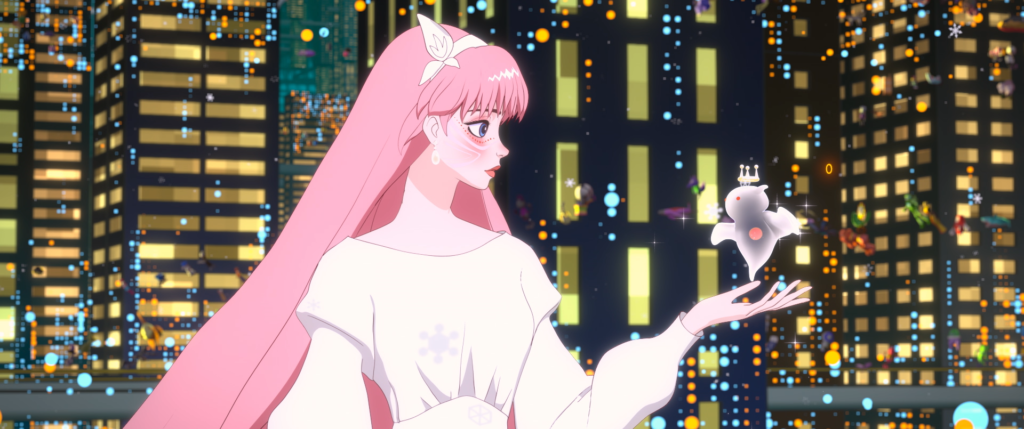
The film’s narrative concerns high school student Suzu Naito, a quiet, anxious young woman unable to move beyond the traumatic experience of watching her mother sacrifice herself to save a stranger’s child as a young girl. Once encouraged by her mother to sing and write music, a passion she loved, now the young woman is unable to sing without becoming quite literally sick. Locked in a cycle of depression, Suzu’s state of perpetual despondence is finally broken when her friend Hiro introduces her to the virtual reality social media platform “U”. Upon starting the program, a character creation process begins automatically, using biometric data to scan the user and create an avatar that highlights one’s inner self and intrinsic talents. Stunned by the beautiful figure created for her, Suzu christens the avatar “Bell”, after the English translation of her own name, and upon entering the world of U realizes that she is able to sing. With help from Hiro, Bell becomes an overnight sensation in U, rechristened “Belle” by the public as she is beloved – and loathed – by millions.
From here, Suzu worries about her identity as Belle leaking out to the public, as she navigates her relationship with old friend and current crush Shinobu, worrying about the possibility of the popular Ruka catching his eye and taking him from her. However, her attention is torn between the dramas of high school relationships and her own double identities, as during one of Belle’s concerts a figure known only as “The Dragon” appears, causing a scene and attracting a vigilante group led by the self-righteous Justin. After this “Beast” defeats his pursuers and makes his exit, Suzu and Hiro become captivated. From here, Belle works to meet and make a connection with the enigmatic Dragon, while Suzu attempts to discern his identity outside of U, all while trying to confess to Shinobu and move past her own anxiety.
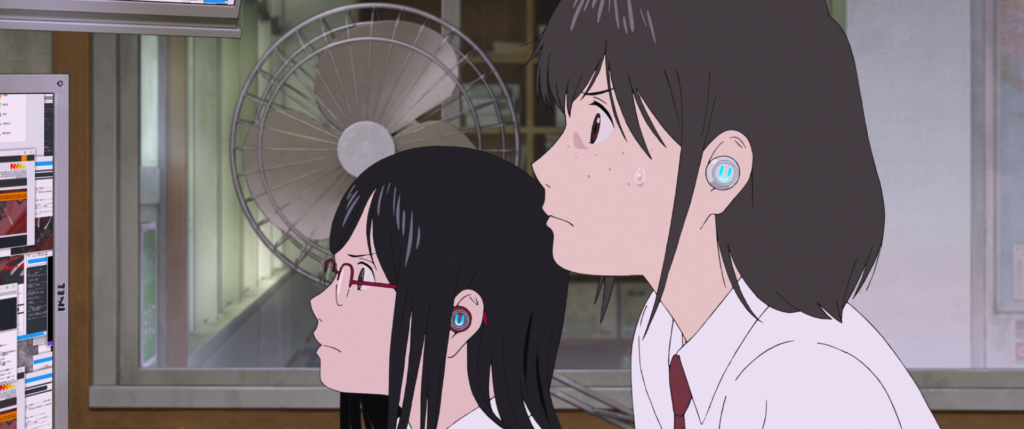
And it is with this ping-ponging back and forth between the Beauty and the Beast narrative and Suzu’s real life that things begin to really deteriorate. Suzu is compelling, and her drama is effective if familiar, but it’s presented in a clipped pace that doesn’t give much time to develop the rest of the cast. The Beauty and the Beast narrative is perhaps the film’s most lacking, borrowing liberally from the aesthetics of the story with very little real weight, cribbing several shots rather directly from the Disney adaptation of the story, all presented with one of the less interesting backgrounds in the film with a more traditional fantasy castle. While the search for the Dragon’s identity outside of U is compelling and enjoyable, within U it feels peripheral. What it does setup for the reveal of the Dragon’s identity is a lackluster sort of finale, an undercooked reveal with an exceptional sequence where Suzu finally demonstrates her confidence in herself, only for the film to undercut itself by the end, and with repeated staging from the film’s opening that doesn’t even distract by value of novelty. By the end the seams truly come apart, tripping over itself and leaving the viewer with a hint of satisfaction, but mostly wanting for more focus.
A considerable issue with the film, and I admit this is something where one’s mileage may vary, is in U; how the characters interact with it and its narrative function. Hosoda’s previous works in cyberspace, notably Digimon: Our War Game and Summer Wars, are about single incidents, with computer viruses centered as the antagonists, and the events occur over the course of a day. In Belle, the more fantastical elements are stretched over multiple days, the interplay between transitioning to and from U never seeming so natural as those other works. Its strangely scaling timetables wouldn’t necessarily be an issue, but are rendered far more pointed by the rapid pace of the film, and instead of the more concretely defined conflict of those previous works, Hosoda takes an everything-but-the-kitchen sink approach in the way her explores relationships to virtual worlds.
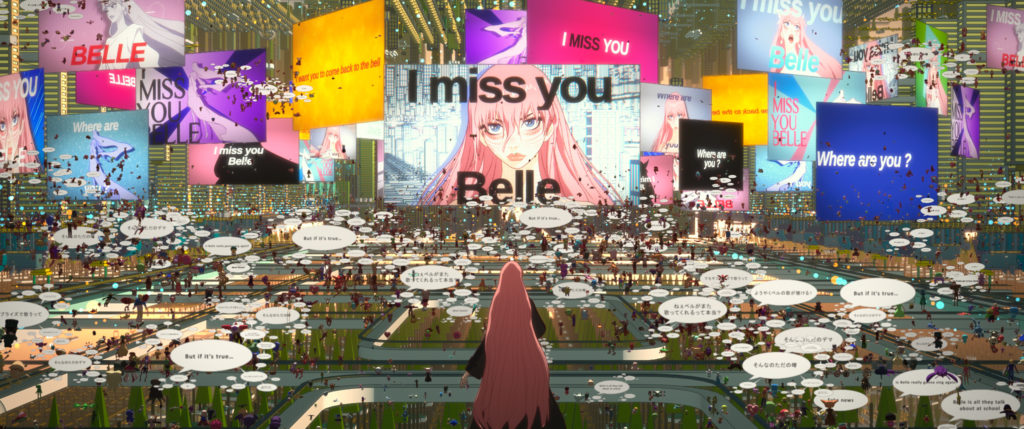
Commenting on celebrity status, anonymity and its ability to bring to fore our worst impulses, idealized identity, the rising trend of virtual idols, and numerous other concepts, but all of them are so paper thin. Belle’s virtual reality is made even less digestible by the extended periods away from U, where the focus is completely – or at least mostly – focused on more conventional romantic drama material, so that our return trips are often like being plunged from a sauna into a tub of cold ice. Like with the narrative, it is more frustrating that it is truly “bad”, as there’s so much potential and so many interesting ideas that Hosoda clearly wants to explore with U, but the actual implementation is not only lacking, but can actually detract from the sequences in the real world.
An element that compounds this frustration is actually one of Belle’s greatest strengths; its visual design, particularly that of U and of its title character. While the Dragon’s castle leaves a bit to be desired and there are some issues with a pervasive, slightly distracting tilt-shift effect, the beautiful yet minimalist landscape of U crafted by Cartoon Saloon is made compelling by the wide variety of figures populating it, rife with designs that run the gamut from comical to cool, all racing around in a way that brings so much life to the virtual world. These characters are crafted with a combination of remarkably well made and stylish 3D models and 2D artwork employing joint animation, but it never draws attention to its economy, employing considerably more exaggerated expressions than one typically sees in 3D animated work.
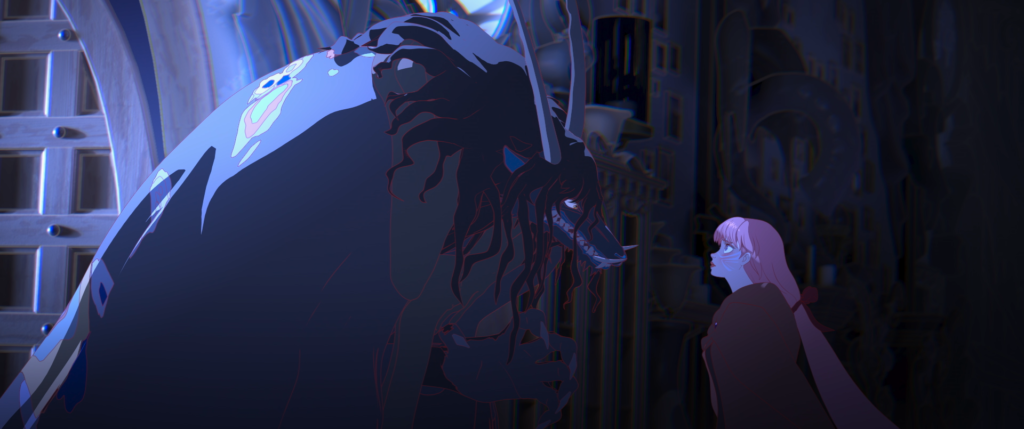
While I find the designs of Justin and the Dragon to be solid if not terribly compelling, Belle herself stands prominently, a highly convincing, expressive figure that manages to emulate the appearance of a 2D animated figure remarkably well, a blend of Disney and and anime styles the comes together to make a wonderfully appealing, excellently animated design. The presentation of the real world is more typical of Hosoda’s work, reflecting the aesthetic of his other films albeit in a somewhat more subdued fashion that highlights the contrast between it and U.
The actual animation of these designs in typically excellent for a Hosoda work, with all of Belle’s concerts serving as spectacular set pieces, her excellent vocal tracks accompanying explosive set pieces. The fights between the Dragon and the vigilantes who hunt him are kinetic and make excellent use of the virtual space provided, with a cute nod to Hosoda’s past forays into cyberspace in the way the Dragon launches himself off scaffolding suspended in the air. The real world is, in much the same way as its visual design, more subdued, but handled elegantly, with smooth animation and expressive characters. In particular, a very minimalist scene where two side characters confess their love to each other is handled very well, the camera holding in a static position while we watch them flounder for some time, shifting between long holds and exaggerated movements in a way that works perfectly.
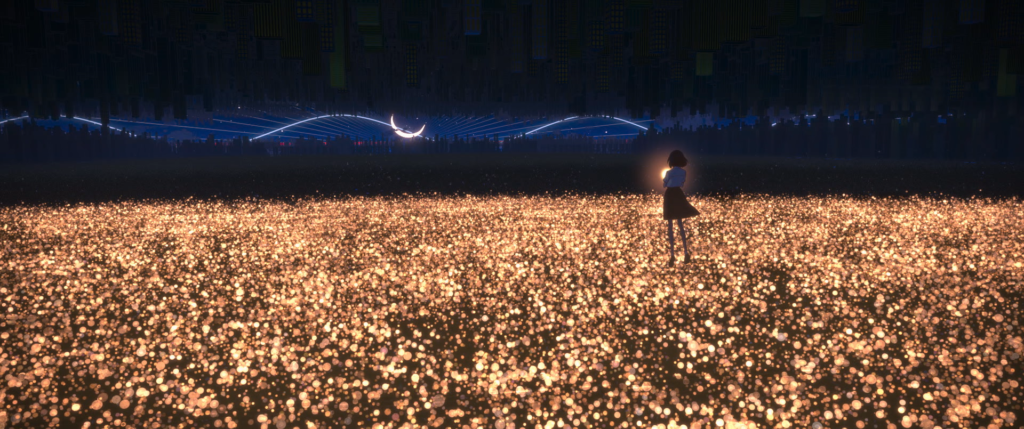
And that’s the thing about Belle. It’s rife with all of these wonderful little moments, gorgeous visuals, exceptional set pieces, and charming characters, but as a whole it just never really comes together. Its frustrating third act, the herky-jerky transitions between the real world and U, poorly thought out inclusion of elements from Beauty and the Beast, and clipped pacing undercuts it considerably, culminating in Hosoda’s weakest film. Yet, weakest is not necessarily bad, and I certainly enjoyed a good portion of Belle, and think younger viewers especially would really be able to glom onto the concepts and visual design of U. It’s a charming, infuriating, gorgeous mess of a film, that at the very least leaves me excited for what Hosoda creates next.


